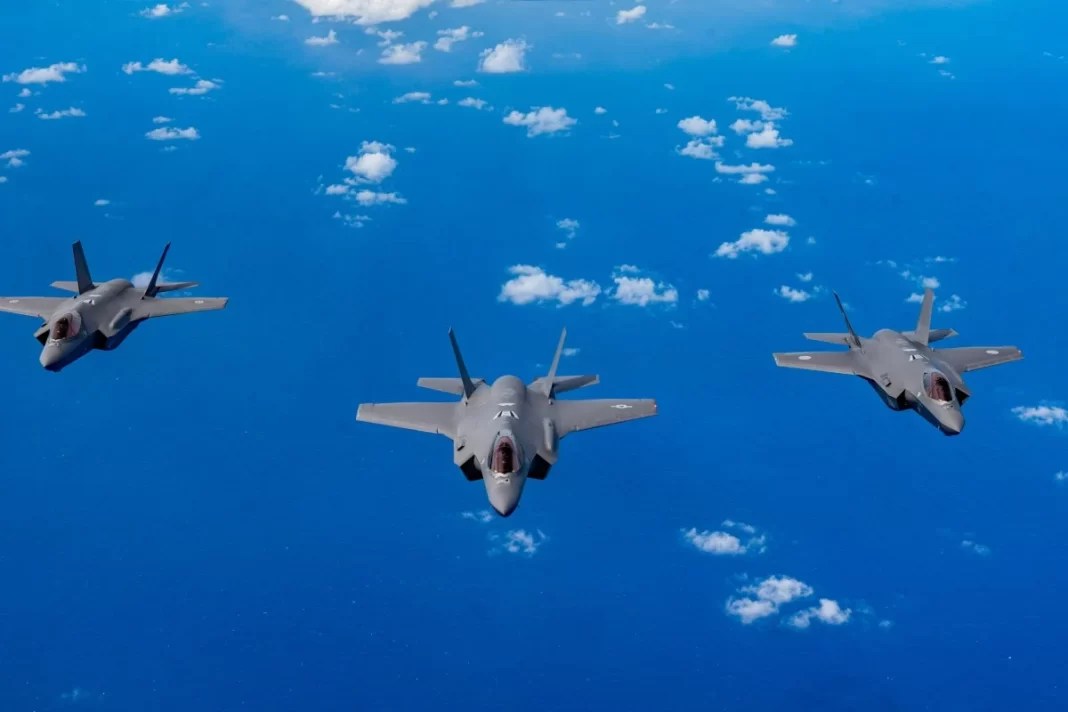A New Threat to Stealth Aircraft
China has made a major breakthrough in military surveillance technology. Scientists say a high-altitude airship can detect stealth fighter jets, like the US-made F-35, from nearly 1,800 kilometers (1,240 miles) away. This discovery could change modern warfare by exposing aircraft designed to be invisible to radar.
How Does the Airship Detect Stealth Jets?
The airship is equipped with advanced infrared detection systems that track heat signatures rather than radar signals. The F-35 jet is covered with radar-absorbing materials, making it difficult to detect using traditional radar. However, its engine exhaust emits extreme heat, which infrared sensors can pick up.
Researchers found that while the aircraft’s body stays relatively cool, its exhaust can reach temperatures of nearly 1,000 Kelvin. By focusing on a specific range of infrared light, the airship can spot the F-35’s heat trail from great distances.
Strategic Advantage of High-Altitude Airships
These airships operate at altitudes of around 20 kilometers (12.4 miles), much higher than most fighter jets. They hover above commercial air traffic but below satellites, making them ideal for long-term surveillance.
Unlike radar-based detection, infrared tracking is difficult to jam or hide from. This means even the most advanced stealth aircraft could struggle to evade detection.
Expanding the Surveillance Network
China is also working on using multiple airships in a network. A formation of six or more airships could cover vast areas, eliminating blind spots.
Another idea involves “swarm tactics,” where thousands of small, unmanned airships work together. Even if half are destroyed, the network would still function. This type of system could create a nearly unbreakable surveillance web over sensitive regions.
A Low-Cost, Long-Term Solution
Unlike expensive spy satellites or manned aircraft, stratospheric airships can stay in the air for months. They require little maintenance and are much cheaper to operate.
Recent tests by Chinese scientists showed a twin-engine airship exceeded expectations in reliability. The system lasted 15% longer than required before experiencing technical failures. This suggests China is close to mass-producing these high-altitude surveillance drones.
A Growing Global Competition
China is not alone in developing these airships. The US and European countries are also working on similar systems. Military experts believe combining airships with satellites and ground-based radars could create an effective way to track stealth aircraft.
The discovery also highlights the growing race for dominance in “near-space” technologies. While much focus has been on hypersonic missiles, China’s airship program shows a different approach—using persistent surveillance rather than high-speed attacks.
Potential Weaknesses of the Airship
Despite its advantages, the airship has some limitations. It moves slowly, traveling at only 120 km/h (75 mph), making it an easy target if detected. Additionally, while it operates at high altitudes, specialized anti-air weapons could potentially shoot it down.
However, because of its extreme altitude, taking it down would require advanced missiles or fighter jets capable of reaching such heights. This makes engagement difficult and costly.
Tensions Between the US and China
This breakthrough comes amid rising tensions between China and the United States. In 2023, the US military shot down a Chinese high-altitude balloon over its territory, sparking controversy. The event showed that China was already experimenting with stratospheric surveillance technology.
China has remained secretive about its airship programs, but experts believe they could soon become a key part of China’s military strategy. These airships could help China monitor activity near Taiwan, track US aircraft carriers, or detect enemy movements in disputed regions.
Changing the Future of Air Warfare
For decades, stealth technology has given the US and its allies an edge in air combat. But with the rise of new surveillance methods, that advantage may be shrinking. If infrared detection becomes more advanced, stealth jets like the F-35 could lose their invisibility.
The use of high-altitude airships could redefine aerial warfare. Countries may need to develop new ways to hide their aircraft or invest in countermeasures to evade infrared tracking. One thing is certain—the competition for military dominance in the skies is only getting more intense.

